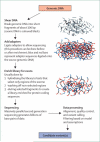Exome sequencing: a transformative technology
- PMID: 21939903
- PMCID: PMC3302356
- DOI: 10.1016/S1474-4422(11)70196-X
Exome sequencing: a transformative technology
Abstract
Background: Much basic research into disease mechanisms has made use of genetic findings to model and understand aetiology. Broad success has been achieved in finding disease-linked mutations with traditional positional cloning approaches; however, because of the requirements of this method, these successes have been limited by the availability of large, well characterised families. Because of these and other restrictions the genetic basis of many diseases, and diseases in many families, remains unknown.
Recent developments: Exome sequencing uses DNA-enrichment methods and massively parallel nucleotide sequencing to comprehensively identify and type protein-coding variants throughout the genome. Coupled with growing databases that contain known variants, exome sequencing makes identification of genetic mutations and risk factors possible in families and samples that were deemed insufficiently informative for previous genetic studies. Not only does exome sequencing enable identification of mutations in families that were undetectable with linkage and positional cloning methods, but compared with these methods, it is also much quicker and cheaper. Use of exome sequencing has so far been successful in many rare diseases. WHERE NEXT?: Exome sequencing is being adopted widely and we can expect an abundance of mutation discovery, similar to the deluge of genome-wide-association findings reported over the past 5 years; it is expected to enable the discovery of not only rare causal variants, but also protein-coding risk variants. This method will have application in both the research and clinical arenas and sets the scene for the use of whole-genome sequencing.
Copyright © 2011 Elsevier Ltd. All rights reserved.
Figures
References
Publication types
MeSH terms
Grants and funding
LinkOut - more resources
Full Text Sources
Other Literature Sources
Medical
Miscellaneous


